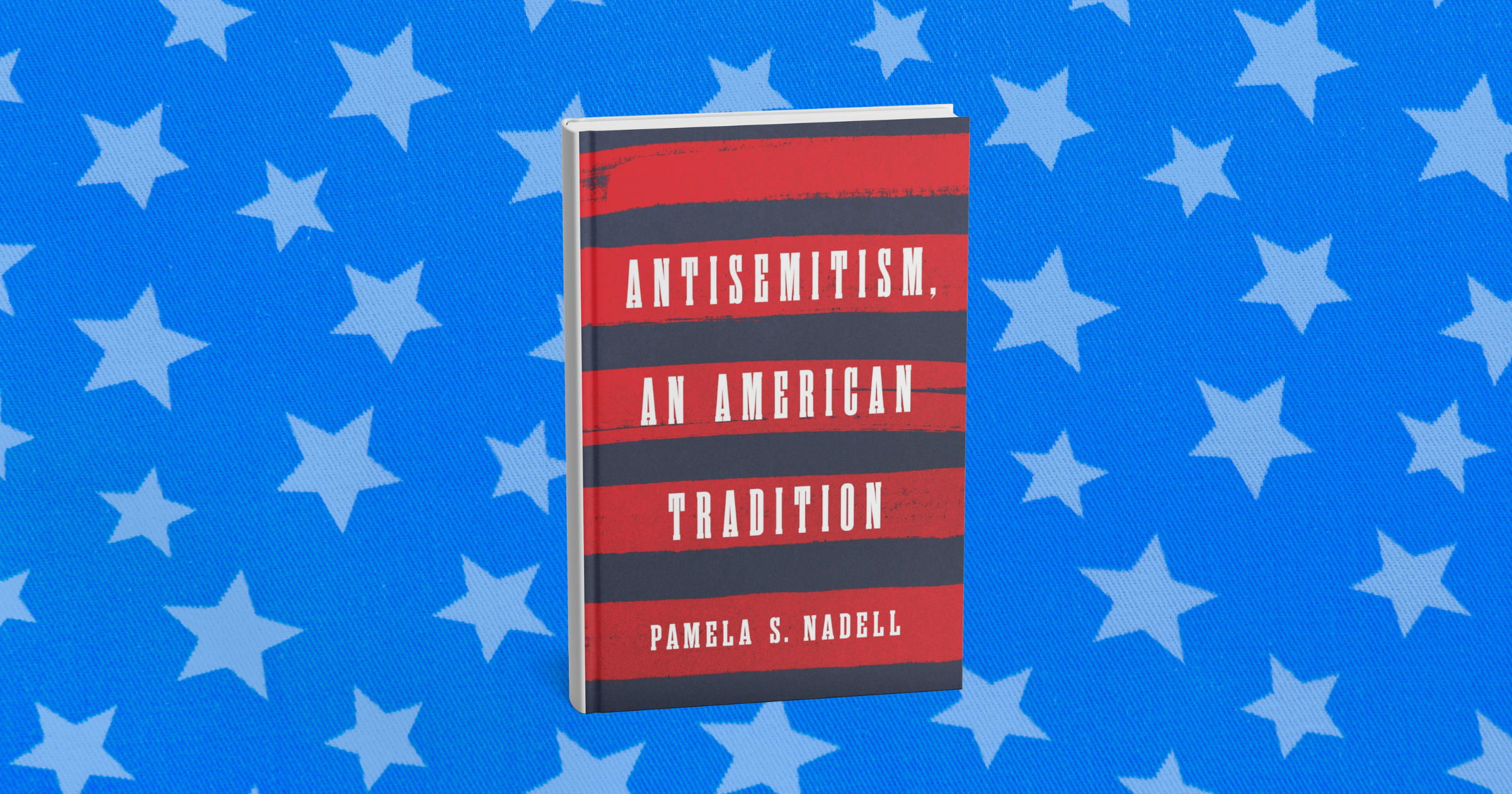Books
REVIEW: ‘Antisemitism, an American Tradition’
Antisemitism, an American Tradition
By Pamela S. Nadell (W.W. Norton)
For many American Jews, the recent surge in antisemitism in the United States came as a shock. How could a war that started with Hamas’s brutal murdering and kidnapping of people living in Israel provoke hate attacks and rhetoric in a country thousands of miles away?
Don’t count the scholar and historian Pamela S. Nadell among the surprised. As she shows in Antisemitism, an American Tradition, animus toward Jews in the United States has a long, ugly history that started as soon as some of the first Jews landed in the New World, back in the 17th century.
Peter Stuyvesant, then the leader of New Amsterdam (now part of Manhattan), called for the ouster of 23 Jews—members, he wrote in a letter, of a “deceitful race.” To be fair, his intolerance extended to other religious groups as well. But his anti-Jewish bias in particular, Nadell notes, has its origins in the Old World: “Colonists not only carried rucksacks to America. They carried ideas about Jewish enmity and degeneracy that lay at the heart of Western civilization.”
Stuyvesant’s expulsion effort was unsuccessful, but his actions were some of the first in the “tradition” of American antisemitism highlighted by Nadell, a professor at American University in Washington, D.C. She traces this tradition through the centuries, from Colonial times to today, with a scholar’s diligence. She toggles seamlessly among such sources as government records, secular and Jewish newspapers and personal diaries to show how antisemitism—a term, she points out, coined in 1879 by the anti-Jewish German writer Wilhelm Marr—has been a thread that runs throughout the Jewish experience in America.
Such hate was widespread in the United States even before the waves of Jewish immigration in the late 19th and early 20th centuries. In many states during the preceding centuries, in fact, taking a Christian oath was a prerequisite to holding office. And during the Civil War, Jews were suspected of being smugglers in trades that benefited the Confederacy.
Nadell demonstrates that antisemitism in the United States has been expressed in a number of ways. Among them is the Shylock trope—Jewish outsiders who use their money and means to undermine society, for instance, in the rhetoric about George Soros. This belief is rooted in the history of Jews as moneylenders during the Middle Ages.
She also argues that antisemitism has not steadily declined over time, but rather goes through ebbs and flows depending on societal and economic pressures. “Moments of crisis embolden antisemitism,” Nadell writes. Indeed, buttressed by the pseudoscience of the eugenics movement and the stress of the Great Depression, the 1920s and 1930s saw an alarming rise in antisemitism. This animus occurred both at the institutional level—top universities limiting Jewish enrollment, for example—and in popular culture, with national figures such as Father Charles Coughlin and Henry Ford promulgating antisemitic views like those based on The Protocols of the Elders of Zion, a 19th-century Russian forgery purporting to outline a secret Jewish conspiracy to dominate the world.
In the early years following World War II, however, antisemitism in the United States did decline, due in part to reaction to the Holocaust, the Vatican II’s 1965 release of a document absolving Jews of Jesus’ death and legislative responses to discriminatory practices such as the Fair Housing Act.
Even then, some structural antisemitism persisted. American Jews were excluded from hotels and country clubs. In 1957, a quarter of American resorts were still restricted, and Nadell quotes historian Deborah Lipstadt, who recalls that even at the age of 13 in the early 1960s, she “knew not to consider certain colleges.”
Despite its strengths, the book leaves at least one open issue regarding American antisemitism. Nadell rightly sees its origins in the Old World and the ways it intersects with international events. She does not, however, raise the question of how, if at all, the “American tradition” of antisemitism differs from its expression globally.
But this is a minor quibble. At a time when antisemitic incidents are on the rise, Nadell has, to her great credit, catalogued a disturbing side of American history that adds nuance to the widespread belief that the American experience has been a uniquely welcoming one for Jews.
Peter Ephross, the editor of Jewish Major Leaguers in Their Own Words: Oral Histories of 23 Players, is a longtime writer about the Jewish world.











 Facebook
Facebook Instagram
Instagram Twitter
Twitter
Leave a Reply